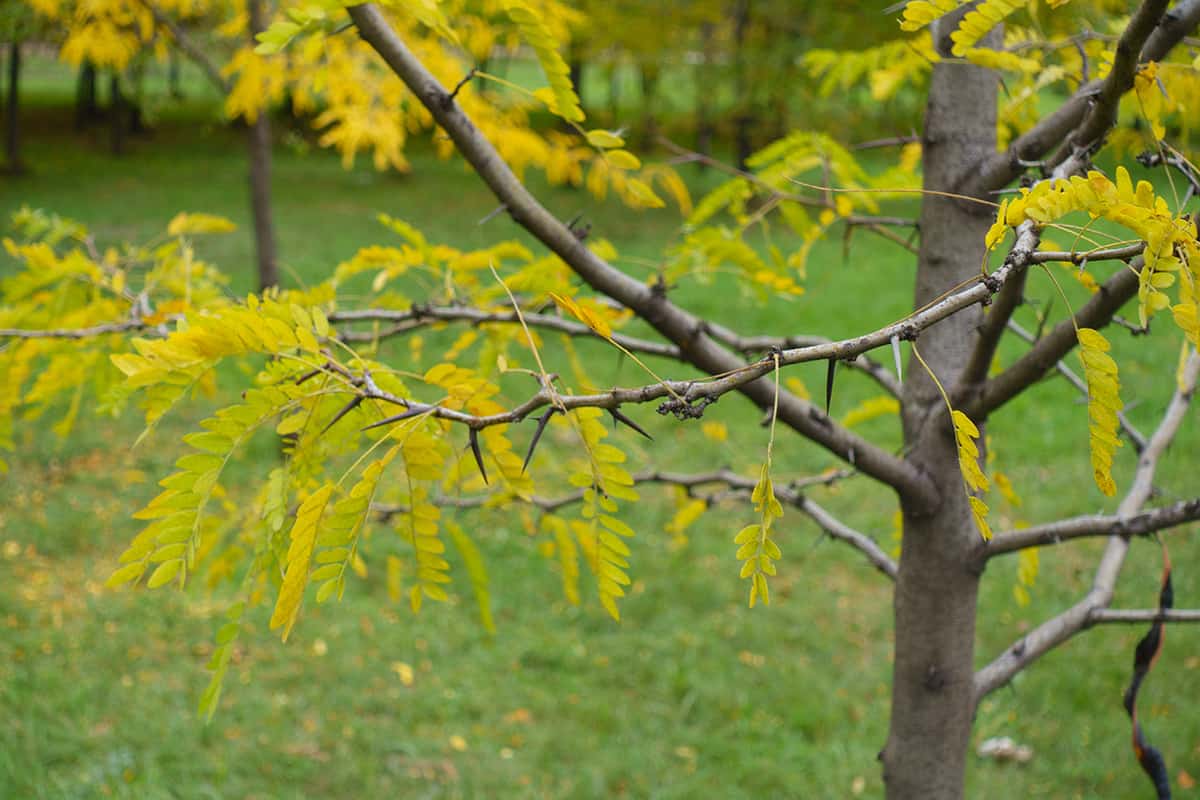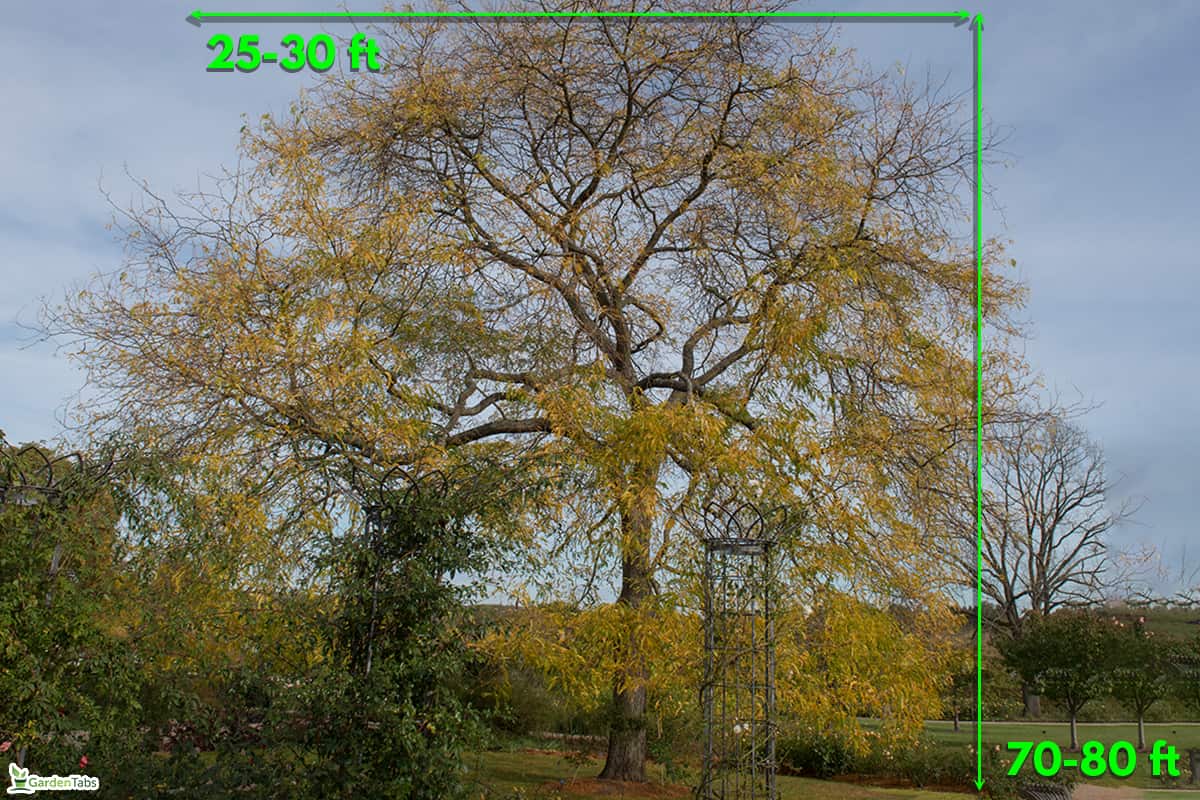Are you a plant enthusiast and want to plant honey locust trees? You might wonder if they have thorns; and whether this would be a safe addition to your landscape. We've researched the honey locust tree to determine if a thorny demeanor could deter you from growing it.
Honey locust trees are known for their attractive foliage, with pinnately compound leaves becoming fragrant in the summer months. Also, the tree's appearance changes depending on the season, which can be very attractive. But honey locust trees do have thorns that could sting if you touch them.
Continue reading to learn more exciting information about the honey locust trees' thorns as well as some other interesting facts that surround these unique plants.
Honey Locust Tree and Its Unique Features
The honey locust tree or also called "thorny" locust is a deciduous tree native to the Midwest and Mid-Atlantic regions of the United States. It belongs to the legume family, bearing beautiful, fragrant flowers during spring, and small yellow fruits by mid-summer.

Additionally, its leaves turn golden in autumn, providing visual interest throughout all four seasons. The species is tolerant of most soil types and drough-resistant, making it an excellent choice as a pathway liner or shade tree.
Its hardiness and resilience offer numerous benefits; specifically, its strong wood structure guarantees long-term stability while providing a great food source for grazing animals thanks to its beans!
Furthermore, honey locusts typically thrive in loose, moist yet well-drained soil. This resilient tree species can even survive floods and periods of drought.
With many varieties to choose from, the honey locust tree can provide greenery and beauty within many climates.
Identifying the Thorns of Honey Locust Trees
Honey locust trees do have thorns but are still considered an aesthetically pleasing addition to a yard. The thorns on this incredible-looking tree are strikingly long and sharp, ranging up to 3-10 centimeters (1-4 inches).
Its distinguishing feature is its unique bark that is shredded-looking and curved inward like a staircase. It has a beautiful golden-yellow color with streams of brown weaving through it.
The bark of this tree is actually composed of hundreds of thin strips that are torn lengthwise. This type of tearing not only adds an ornamental appearance to the trunk but also serves important functions like avoiding damage from extreme temperatures, providing added protection against fungal infections, and decreasing water loss from evaporation.
Are Honey Locust Trees' Thorns Poisonous?

The most common problem associated with touching the thorns of honey locust trees is local irritation and inflammation at the site of contact. If a thorn punctures the skin and breaks off, infection is also possible, so seek medical advice immediately.
Despite being painful, getting stung by a honey locust tree thorn isn’t normally dangerous - but it does pay to take precautions when near such trees as a precautionary measure.
If you are unfortunate enough to get a sting from the honey locust tree, don't panic – the reaction is usually mild and goes away on its own. But it is important to act quickly.
First, rinse the affected area with cool water and soap to cleanse the wound. Then, hydrate your skin using aloe vera gel or calamine lotion. You may also consider using an ice pack or cold cloth in the area for 20 minutes to reduce any swelling.
Some have reported that lavender essential oil has healing properties when applied directly to a wound, but this should not replace medical advice. If any of the thorns were left behind, you can use tweezers to carefully remove them.
Afterward, take an over-the-counter antihistamine like Benadryl for relief from itching and inflammation.
Lastly, if the pain is severe or there are signs of infection such as extreme swelling, trouble moving, or redness developing around the sting site, seek medical attention; it can be a sign of infection.
Can I Remove Honey Locust Tree Thorns?

Removing thorns from honey locust trees can be a tricky task. Known for their incredibly strong thorns, you'll need to take the necessary precautions to avoid injury when removing them.
With the proper tools, such as gloves and pruning shears, it is possible to safely remove the thorns from your tree, often by cutting off the branch in which they are located. The numerous thorns that adorn its branches can make it a less-than-ideal choice for those wishing to avoid getting pricked by a thorn.
Fortunately, there are ways to reduce the number of thorns on your honey locust tree. Once you protect your skin and arms with proper clothing and gloves, begin removing the thorns directly from the tree's bark.
Get thorn-proof gloves on Amazon.
Some of these may come away easily, while others will require patience because they are firmly in place. If necessary, you can use pliers to help remove each thorn.
Additionally, heavy pruning once or twice per year can help limit the amount of new growth each season which in turn helps keep the number of thorns at bay. The best season to prune the tree in autumn and when the tree is still young.
The Benefits of Pruning Honey Locust Tree Thorns
First, this type of pruning reduces the risk of injury when walking or working near the tree by eliminating the long thorns from branches.
Additionally, it enhances the tree’s aesthetic appeal since the removal of the thorns reveals attractive small leaflets that now can be seen in all their splendor.
Furthermore, this process improves airflow, allowing more light and water to penetrate the branches so that the leaves and flowers can thrive.
Finally, pruning honey locust tree thorns relieves stress on its trunk and encourages the growth of a more mature crown shape.
How Big Could the Honey Locust Trees Get?

Honey locust trees grow two feet a year or more which is considered incredibly fast compared to other trees. They can reach heights from 70-80 feet tall and 25-30 feet wide with a root depth of 10-20 feet.
Their trunks are usually about two to three feet (24-36 inches) in diameter, and their branches are covered with fine leaflets that provide brilliant shades of yellow and orange for the autumn leaf viewing pleasure. Throughout the year, honey locust trees attract birds that depend on its bean-like pods of sweet larvae for food, as well as multiple other species of wildlife.
These trees provide much-needed windbreaks for yards or farms alike. The honey locust is an excellent choice for landscaping in any region where it will survive because it is so hardy and resilient and yet its graceful shape provides a beautiful background or nicely framed boundary.
Not only is it a lovely tree for the eye, but its pods are also high in calcium and energy-rich carbohydrates.
What Is the Lifespan of a Honey Locust Tree?

The lifespan of a honey locust tree is quite impressive. If given the right conditions, the tree can live for over 300 years! But the average lifespan of the tree is 125 years. It is native to North America, with its hardiness and fast growth rate allowing it to thrive in a variety of habitats.
Despite its impressive longevity, the tree has a short-lived height peak of around 75 feet. When cared for properly, one can expect this beautiful species to blossom into a majestic sight within their garden or neighborhood park.
The leaves of honey locusts can transform from purple in the early months of spring to bright yellow in late fall - making it well worth an investment for any nature lover.
Final Words
Although the honey locust tree does have some disadvantages, such as its thorns that could hurt and last for a few days when touched, it is still a great choice for those looking for an attractive tree with fragrant foliage and a changing appearance throughout the year.
To learn more about gardening, kindly click the links below:
How Many Marigold Seeds Per Square Foot, Per Hole or Per Pot?

